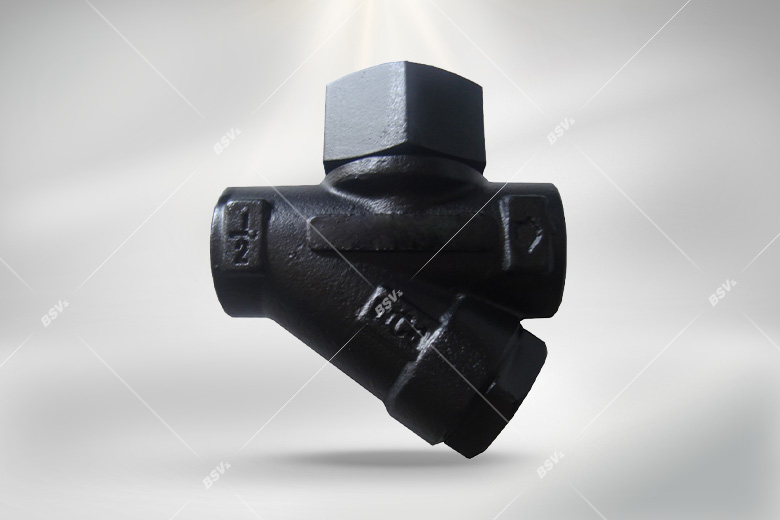Release time:2025-04-23Clicks:
Steam traps are a critical component in any steam system, ensuring that steam is used efficiently while removing condensate and non-condensable gases. Without properly functioning steam traps, steam systems can experience energy losses, reduced efficiency, and potential damage to equipment. The design of steam traps is an intricate science that balances thermodynamics, material science, and engineering principles. In this article, we will explore the science behind efficient steam trap design, with a focus on the expertise provided by Lishui BSV Valves Supplier (BSV), a leading company in the field.
Steam traps serve a simple yet vital purpose: to discharge condensate and air from steam systems without allowing live steam to escape. This ensures that steam remains available for heat transfer or mechanical work, maximizing energy efficiency and maintaining system performance. However, achieving this balance requires a deep understanding of steam behavior, pressure dynamics, and material properties.
Efficient steam trap design must account for various factors, including the type of steam system, operating pressure, temperature, and the specific application. Lishui BSV Valves Supplier has invested heavily in research and development to create steam traps that meet these diverse requirements while maintaining durability and reliability.
Pneumatic Lug Type Butterfly Valve
Swing Check Valve
API Globe Valve
Handle Lug Type Butterfly Valve

One of the primary considerations in steam trap design is thermodynamic efficiency. Steam traps must efficiently separate condensate from live steam. This involves understanding the phase change from steam to water and the associated temperature and pressure changes. Thermodynamic traps, for example, utilize the difference in density and energy between steam and condensate to achieve separation. BSV designs steam traps with advanced thermodynamic principles to ensure minimal energy loss.
The materials used in steam trap construction significantly impact their performance and longevity. Steam traps must withstand high temperatures, pressures, and potentially corrosive environments. Lishui BSV Valves Supplier uses high-grade materials such as stainless steel and specialized alloys to ensure their traps are resistant to wear, corrosion, and thermal stress. This not only improves performance but also reduces maintenance costs over the life of the system.
Different steam systems operate under varying pressure and temperature conditions. A well-designed steam trap must function effectively across its intended range. BSV offers a wide variety of steam traps, each tailored to specific operating conditions. For example, their float and thermostatic traps are ideal for low-pressure systems, while thermodynamic traps are better suited for high-pressure applications.
Energy conservation is a critical goal in modern steam systems. Inefficient steam traps can lead to significant energy losses, driving up operational costs and carbon emissions. Lishui BSV Valves Supplier integrates energy-saving features into their steam trap designs, such as advanced sealing mechanisms and optimized flow paths, to minimize steam leakage and maximize condensate removal.
Steam traps come in various designs, each suited to specific applications. Lishui BSV Valves Supplier offers a comprehensive range of steam traps to meet diverse industrial needs:
Thermodynamic traps are compact and robust, making them ideal for high-pressure applications. They operate based on the difference in energy between steam and condensate. BSV’s thermodynamic traps feature advanced disc designs that ensure reliable operation even in demanding conditions.
F&T traps are widely used in low-pressure systems where continuous condensate discharge is required. These traps use a float mechanism to detect condensate levels and a thermostatic element to remove air. BSV’s F&T traps are engineered for precise operation and long service life.
Inverted bucket traps are known for their durability and resistance to dirt and corrosion. They operate using a buoyant bucket mechanism that opens and closes the valve based on condensate levels. Lishui BSV Valves Supplier offers inverted bucket traps with enhanced sealing and wear resistance for extended performance.
Thermostatic traps use temperature-sensitive elements to differentiate between steam and condensate. These traps are ideal for applications where precise temperature control is required. BSV’s thermostatic traps feature advanced thermal elements for rapid response and reliable operation.

Lishui BSV Valves Supplier has established itself as a leader in steam trap technology by continuously innovating and improving its designs. Some of their key innovations include:
A recent case study highlights the benefits of using BSV steam traps in an industrial facility. The facility, which operates a large steam system for manufacturing processes, was experiencing significant energy losses due to faulty steam traps. After replacing their outdated traps with BSV’s advanced models, the facility achieved the following results:
The science behind efficient steam trap design is a blend of thermodynamics, material science, and engineering innovation. Lishui BSV Valves Supplier has mastered this science, delivering high-performance steam traps that meet the diverse needs of industrial steam systems. By investing in advanced materials, cutting-edge technology, and customer-focused solutions, BSV continues to set the standard for steam trap efficiency and reliability.
Whether you’re looking to reduce energy costs, improve system performance, or extend the life of your steam system, BSV’s range of steam traps offers a solution for every application. Trust Lishui BSV Valves Supplier to provide the expertise and quality you need to optimize your steam system.
For more information about BSV’s steam traps and other products, visit their website or contact their expert team today. Experience the difference that efficient steam trap design can make for your operations.